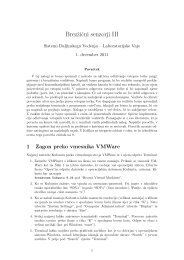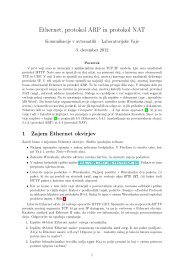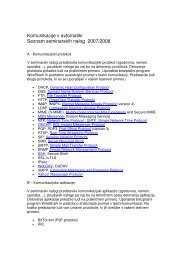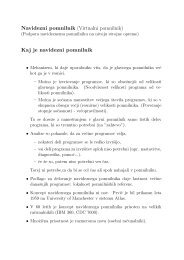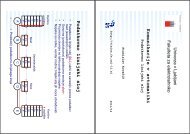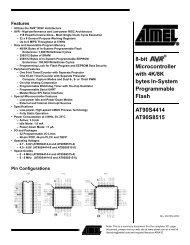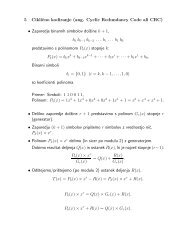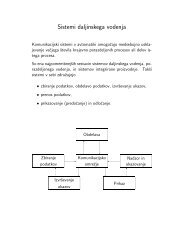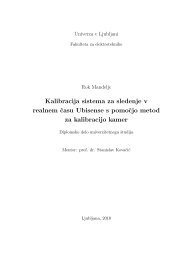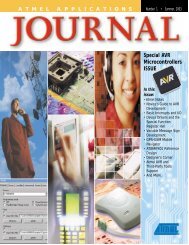AVR Instruction Set Nomenclature: Status Register (SREG ...
AVR Instruction Set Nomenclature: Status Register (SREG ...
AVR Instruction Set Nomenclature: Status Register (SREG ...
You also want an ePaper? Increase the reach of your titles
YUMPU automatically turns print PDFs into web optimized ePapers that Google loves.
RET - Return from Subroutine<br />
<strong>Instruction</strong> <strong>Set</strong><br />
Description:<br />
Returns from subroutine. The return address is loaded from the STACK. The stack pointer uses a pre-increment scheme<br />
during RET.<br />
Operation:<br />
(i) PC(15:0) ← STACK Devices with 16 bits PC, 128K bytes program memory maximum.<br />
(ii) PC(21:0) ← STACK Devices with 22 bits PC, 8M bytes program memory maximum.<br />
Syntax: Operands: Program Counter: Stack:<br />
(i) RET None See Operation SP←SP + 2, (2bytes,16 bits)<br />
(ii) RET None See Operation SP←SP + 3, (3bytes,22 bits)<br />
16-bit Opcode:<br />
<strong>Status</strong> <strong>Register</strong> (<strong>SREG</strong>) and Boolean Formula:<br />
Example:<br />
1001 0101 0000 1000<br />
I T H S V N Z C<br />
- - - - - - - -<br />
call<br />
...<br />
routine ; Call subroutine<br />
routine: push<br />
...<br />
r14 ; Save r14 on the stack<br />
pop r14 ; Restore r14<br />
ret ; Return from subroutine<br />
Words: 1 (2 bytes)<br />
Cycles: 4 devices with 16-bit PC<br />
5 devices with 22-bit PC<br />
95




